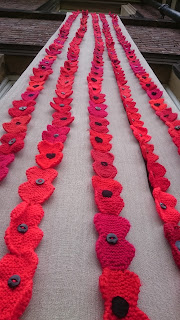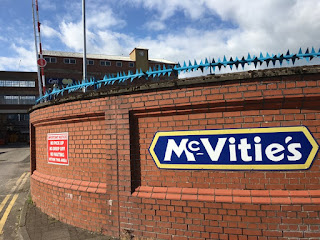The Battle of the Somme Community Poppy Project
There are times in your Museum career when you do something that you absolutely love and are incredibly proud of. This was the case in 2016, when we decided to embark on an ambitious project to commemorate the Border Regiment's contribution to the Battle of the Somme.
We were keen to look at the Battle of the Somme in more detail and wanted to highlight it was more than the 1st July. Infact, it was 141 days long, finishing in November 1916 when the Germans withdrew to consolidate their position. Plus we wanted to show just how many men from the Border Regiment lost their lives during this period. The seeds of an idea continued to develop. I wanted to involve the community and produce a public piece of art that was visual, that created a memorial that had an immediate impact. The poppy project was born, now all I had to do was secure funding and get some community involvement.
Funding from Carlisle City Council enabled a creative practitioner to produce two easy to follow patterns to create a knitted or crocheted poppy. The idea? To get people to make these poppies and send them in to the Museum. Each poppy would represent one Border Regiment soldier killed at the Somme and would be sewn onto some material, made into enormous banners and hung out of the first floor Museum windows to create a wall of poppies. Easy. Well we also needed a comprehensive daily list of deaths. Thankfully, volunteer support helped us again. Now all we had to do was get people involved. The next challenge.
I was invited to speak at the annual general meeting of the Cumberland Federation of Women's Institutes. As I spoke to hundreds of ladies in the lecture room at Rheged, I highlighted how the soldiers were part of their community and how they paid the ultimate price in 1916. I took patterns with me, handed them out, then waited. Additionally, an article appeared in the local paper and I was interviewed by Radio Cumbria. We needed 1700 poppies. Slowly but slowly, the poppies started to arrive at the Museum.
Now the challenge was to sew them onto jute material, kindly donated by Stead MacAlpine. Initially, the staff undertook the challenge of sewing hundreds of poppies but the weather took its toll and we found the banners needed care and attention. So once again I turned to the WI and appealled for help. Luckily, we were rewarded with four WI ladies who came in weekly until November to repair and look after the banners. Life savers! Next, we had to work out how to hang the banners out of the Museum windows. The staff worked out the drop, sorted out carabiners and rope and how to attach the banner to Alma block. The length of the banners could easily turn them into sails in any windy weather, so 4Lancs helped with sandbags and we anchored them down to prevent any accidents. On 1 July, the first banner was dropped out of the window at 0730 with a short ceremony outside the Museum. The Last Post was played. The commemorative project had begun.
And still the poppies kept coming, were sewn onto the material and daily dropped out of the window and brought in at night. There was only one day we were unable to put the banners out due to the weather. Our initial call for 1700 poppies was far exceeded with over 10,000 being sent to the Museum. There were constantly poppies everywhere and even the local Market wool stall started to run out of red wool! The lovely WI ladies became a regular wednesday arrangement and were with us when we finally pulled in the banners on the last day. After four and a half months of daily putting the banners on display, the project finished. We were almost bereft, it had become part of our daily routine and had made a huge impact. It had got people talking, about the project and the battle of the Somme, and had made them remember. The installation had been a great success.




Comments
Post a Comment